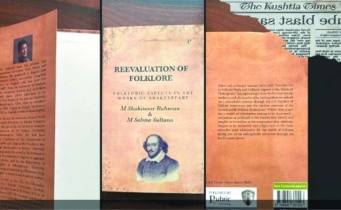
South Asia is the testimony of diversified social cohesion with full of prosperity, mixed culture, language, political dynamics and again cruel story of human deprivation, poverty and other nontraditional security (NTS) activities. The present day South Asia was mostly one geographical and natural entity that changed its political boundaries with the British control. After a prolonged Counter Insurgency Operation (CIO) since independence of Bangladesh in 1971, a Peace Accord (Accord) took place in CHT on 02 December 1997 between Parbatta Chattagram Jonosanghati Samity (PCJSS) and Bangladesh government sponsored National Committee. Accord could not establish social cohesion and led to absence of good governance. The result is infighting among the four armed groups of local political parties, other miscreants under local influential persons and fighting with security apparatus of Bangladesh government. The general masses of Bangladesh are not aware about the details of Accord and its impacts. The common people of CHT has become the prey to a group of interested parties. The interested parties want to prolong the dissatisfaction level and hinder the social cohesion. It is ultimately hindering the good governance in CHT.
Social cohesion is defined as the willingness of members of a society to cooperate with each other in order to survive and prosper. Social cohesion in thinking and practice may create synergy and affect good governance. Excepting Mongols, all the invaders integrated with South Asian society. Finally, the Mughals were instrumental in uniting the South Asian countries. They exhibited values, understanding and religious tolerance which was absent with imperial powers. They all became South Asian or great Indians instead of their place of origin. The baton of leadership changed in 1757 with defeat of Nabab of undivided Bengal. The British Empire expanded to whole South Asia. During 190 years of rule, the British organized new strategies to eliminate Mughal/Indian system in all areas and transferred raw materials and wealth to England. They did not assimilate with South Asia. But, they created an ill motivated new class of administrators, political activists, educationists, religious sympathizers, local elites, traders, suppliers, cultural activists etc who were "more British than Indians" with British mentality, attitude and culture. The social division added to the injury when political leadership divided on Hindu- Muslim religious line and question of following the path of national resistance or cooperation to the British Empire during World War II. The Indian Sub-continent was divided in various times by British without detail demarcations and avoiding social, economic, geographical and historical realities.
We witnessed migration of millions of people during partition of 1947 as a cruel effect of disregarding social cohesion. The destruction of social cohesion was completed with the so-called legacy left behind by the British which included all colonial, acts, rules, regulations and politico-administrative boundaries of India and Pakistan and governance system( administrative structure, judiciary, and legislative) without participation of mass people. Similar fate happened with rest of the countries of South Asia including Myanmar.
CHT is inhabited by 13 ethnic/tribal groups who are significantly different from the mainstream Bangladeshi population by race, language, culture and religion. They migrated to this isolated land from North East India and Myanmar before 250-400 years. Their 'slash and burn style' of agriculture, is known as 'Jhum' cultivation and they follow subsistence economy. Today, the tribal people, numbering approximately 500,000 constitute about 53% of the total CHT populations. The British systematically divided Bengal and greater Assam number of times to suit their 'divide and rule policy' and separated CHT from Chittagong district in 1886. CHT Regulation of 1900 gave special status of an 'autonomously administered area', divided into three revenue circles; each headed by a Raja. In 1935, it was mentioned as "Excluded Area" in the constitution. The 'special status' was eliminated in 1963 through a constitutional amendment. Construction of Kaptai Dam caused displacement of over 100,000 people (tribal and Bengali), flooded about 40% arable land and over 40,000 tribal people took refuge in North East India and Myanmar. During Bangladesh's War of Independence, the Chakma Raja Tridip Roy supported the Pakistan regime.This branded the Jumma people as pro-Pakistanis. The cleanup operation by Mukti Bahini and Indian Forces in the last days of December 1971 caused social misgiving among the general people of CHT. The economic causes like transforming production oriented system, afforestation, relocating tribal through Reserve Forest Act, urbanization, communication up gradation etc changed the life of jhum people during colonial, Pakistan and Bangladesh time.
Continue ……
The writer is a retired military officer. He can be reached at Email: ghaniboby@yahoo.com





































